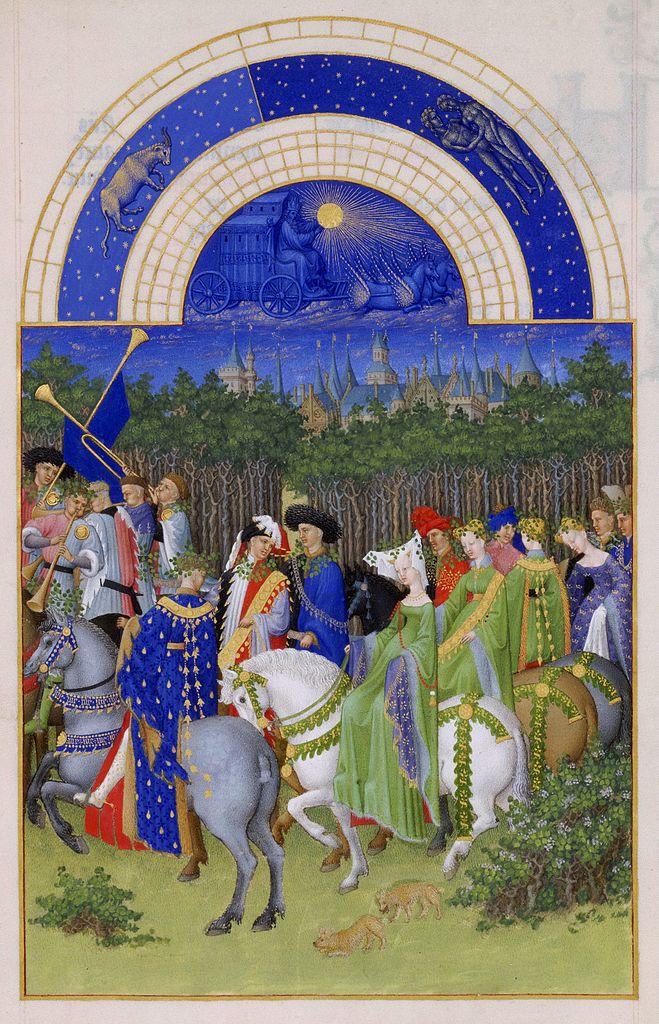
Limbourg brothers (fl. 1402–1416)
Public Domain (Wikimedia Commons)
May is the fifth month on the current Gregorian and the old Julian calendar. It is named for the Greek goddess Maia. On the old Roman calendar, this was the third month. May has 31 days. The full moon in May is sometimes called the Flower Moon since many flowers bloom during this month.

Davidjose365, May 2015
Wikimedia Commons
May is commonly associated with spring in the Northern Hemisphere but autumn in the Southern Hemisphere. As the bridge month between spring and summer, the month has some days of hot and cold depending on location. There is an old expression that says “Warm January, cool May” that sometimes is accurate. In more olden times, when you sealed up the home for winter, it is now time to open the windows and let the warm spring air in! Spring cleaning was (and still is) a time to clean out the home after a long cold winter and freshen it up. If you ever saw the television show The Beverly Hillbillies, granny would have everything put outside so she could thoroughly and completely clean their mansion.

Spring Lamb In The Sunshine
Photo: Tanya Hall/publicdomainpictures.net
Spring is the time that plants begin to grow, and many festivals and celebrations have grown up around it. The ancient Romans had several of them during May and many Europeans today have events during the month. Late May is often considered the beginnings of the summer season in many places. The May symbols are the emerald (birthstone), along with Lilly of the Valley and Hawthorn as the birth flowers.
For more information
“The Month of May 2024: Holidays, Fun Facts, Folklore.” Almanac.com, 1 May 2024, www.almanac.com/content/month-may-holidays-fun-facts-folklore.
The Month of May. www.timeanddate.com/calendar/months/may.html.
—. “May.” Wikipedia, 2 May 2024, en.wikipedia.org/wiki/May.
